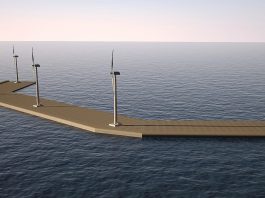Float Europe discusses the global threat posed by rising sea levels to our planet’s ports and how the company’s leading technology offers an innovative solution.
As the world grapples with the escalating impacts of climate change, rising sea levels are emerging as a critical concern.
This global phenomenon poses an imminent threat to numerous sectors, particularly seaports, that play an indispensable role in international trade and the global economy.
These vital infrastructures, handling billions of tonnes of cargo annually, face significant risks from various global warming scenarios, including extreme weather events and rising sea levels.
Understanding climate change
Despite some scepticism about the severity of global warming, a growing body of scientific evidence demonstrates that climate change is likely to significantly impact seaports worldwide, with sea-level rise and extreme weather events posing substantial risks, particularly for major European ports.
The maritime sector plays a critical role in the world economy and international trade; hence, disruptions due to climate change impacts could potentially destabilise global economic systems.
Sea level rise projections indicate an increased frequency and intensity of these events in the future. Therefore, understanding these potential threats to port infrastructure becomes crucial for developing effective mitigation strategies.
In-depth analysis reveals that the impacts on ports vary depending on their geographical location and existing protection measures. For instance, ports such as Rotterdam, Amsterdam, and London already have defences in place against flooding and storm surges.
However, given the projected increase in sea levels due to changing climate scenarios, upgrading these existing defences will likely become necessary. Furthermore, inland ports like Hamburg and Antwerp may be more easily defended against rising sea levels than those on coastlines exposed directly to oceanic influences.
Adaptation measures taken by various European ports provide valuable insights into how best to address this looming threat from climate change impacts. These include not only physical barriers, but also logistic solutions aimed at minimising trade disruptions caused by extreme weather events or rising water levels.
Such interventions are necessary considering that any disruption in port operations can affect non-coastal regions connected through road networks or inland waterways as well as foreland regions across different continents due to secondary effects of sea level rise at a global scale.

Thus, it’s evident that proactive planning based on accurate risk analysis is key for maintaining resilience within this vital sector amid evolving environmental challenges.
Vulnerability of seaports to climate change
Climate change presents a significant threat to the operational efficacy of seaports, with their vulnerability being intertwined with projected increases in extreme weather events and sea-level fluctuations.
Sea levels have been predicted to rise significantly by 2100, posing a major risk to global trade networks. The maritime sector is a crucial component of the global economy; hence, disruptions due to these environmental changes can drastically impact international commerce. Seaport infrastructure worldwide will need substantial upgrades and protective measures against coastal inundation caused by rising sea levels. Risks include:
- Seaport Infrastructure: Ports such as Rotterdam, Amsterdam, and London are fortified against flooding and storm surges, but further enhancement will be necessary to protect them from projected sea-level rises. Inland ports like Hamburg, Antwerp, Ghent, and Gothenburg, among others, can be more effectively defended against rising sea levels.
- Coastal Inundation: Extreme water levels can lead to coastal inundation, affecting port operations even in non-coastal regions connected through transport networks. Defensive measures like storm surge barriers protect infrastructures but may restrict ship movement.
- Trade Networks: Disruptions in port activities due to climate change can hinder transport and trade for goods originating or destined at the affected ports, impacting both hinterland and foreland regions.
- Global Trade and Climate Resilience: Considering the significance of the maritime sector for global trade, there is an increasing need to develop adaptive strategies that promote climate resilience.
The risks associated with climate change extend far beyond Europe’s shores; Mediterranean ports may not experience much direct impact from rising sea levels but could face considerable indirect impacts due to disruptions in Northern European ports, which serve as major nodes in their supply chains.
Similarly affected would be East US coastlines and Brazil, along with traffic transiting the Panama Canal, potentially leading to widespread complications for global trade networks if adequate steps towards resilience aren’t taken soon enough in response to this looming crisis posed by climate change.
Adaptation strategies
Addressing the vulnerability of seaports to projected climatic changes necessitates the formulation and implementation of robust adaptation strategies that ensure resilience and continuity in maritime operations.
These strategies should focus on both structural and operational adaptations, taking into account the specific risks faced by each port due to climate change. Structural adaptations may include bolstering port infrastructure with coastal defences designed to withstand increased sea levels, storm surges, and other extreme weather events.
This could involve upgrading existing defences or constructing new ones where necessary. Operational adaptations, meanwhile, might entail modifying port procedures to minimise disruptions during extreme weather events or increasing flexibility in trade networks to reroute cargo when certain ports are inaccessible.
Inland ports can be more easily defended against rising sea levels compared to their coastal counterparts, owing largely to their geographical location. However, it is crucial that a comprehensive risk assessment is carried out for all these ports, regardless of their positions relative to coastlines.
Such assessments would help identify potential vulnerabilities in the face of rising sea levels; this information can subsequently be used in devising appropriate measures such as improving flood barriers or stormwater management systems.
In addition to protecting physical infrastructure within these ports from damage caused by elevated water levels or storm surges, it is also essential for these mitigation strategies to consider potential impacts on transport logistics and supply chains linked with these inland ports.
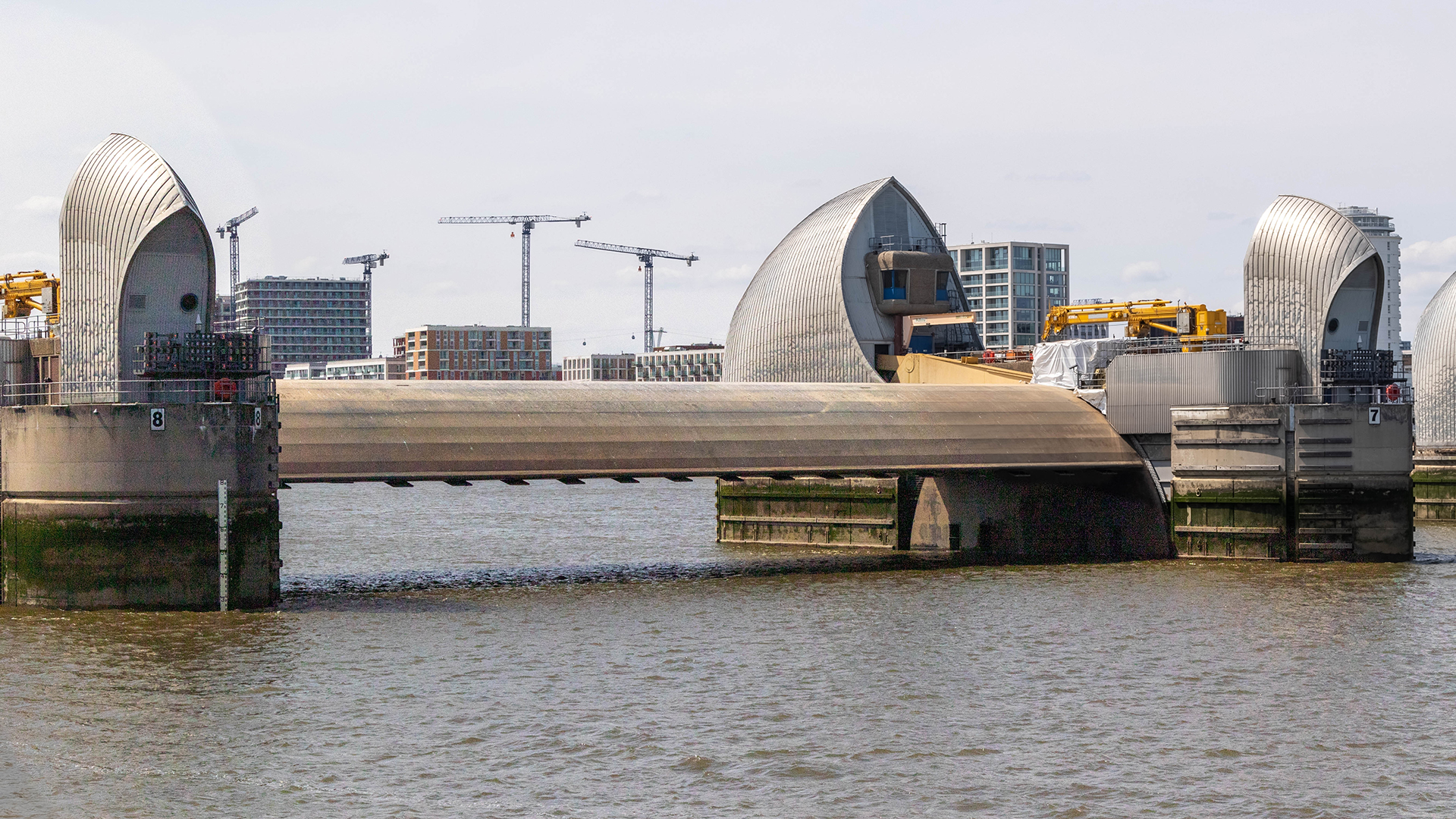
© shutterstock/Ben Gingell
The effectiveness of any adaptation strategy depends heavily upon its integration into long-term planning processes at both national and international levels. Promoting resilience within global trade networks impacted by climate change-induced sea-level rise requires cooperative efforts among nations sharing maritime routes.
As well as making provisions for direct impacts on individual ports due to rising water levels or extreme weather events (such as inundation), indirect impacts resulting from disruption within interconnected maritime networks must also be accounted for in adaptive planning initiatives.
Protection measures in ports
Existing coastal defences may require significant infrastructure upgrades in response to projected sea-level rise under various high-end climate scenarios.
Resilience measures involve a combination of risk assessment techniques for individual ports along with analyses of port connections and hinterland linkages. Comprehensive data on coastal inundation can inform the identification of vulnerable seaports and quantify potential impacts on cargo volumes.
However, it must be noted that while defences against storm surges protect port infrastructure effectively, they might simultaneously impose navigation restrictions affecting ship movement.
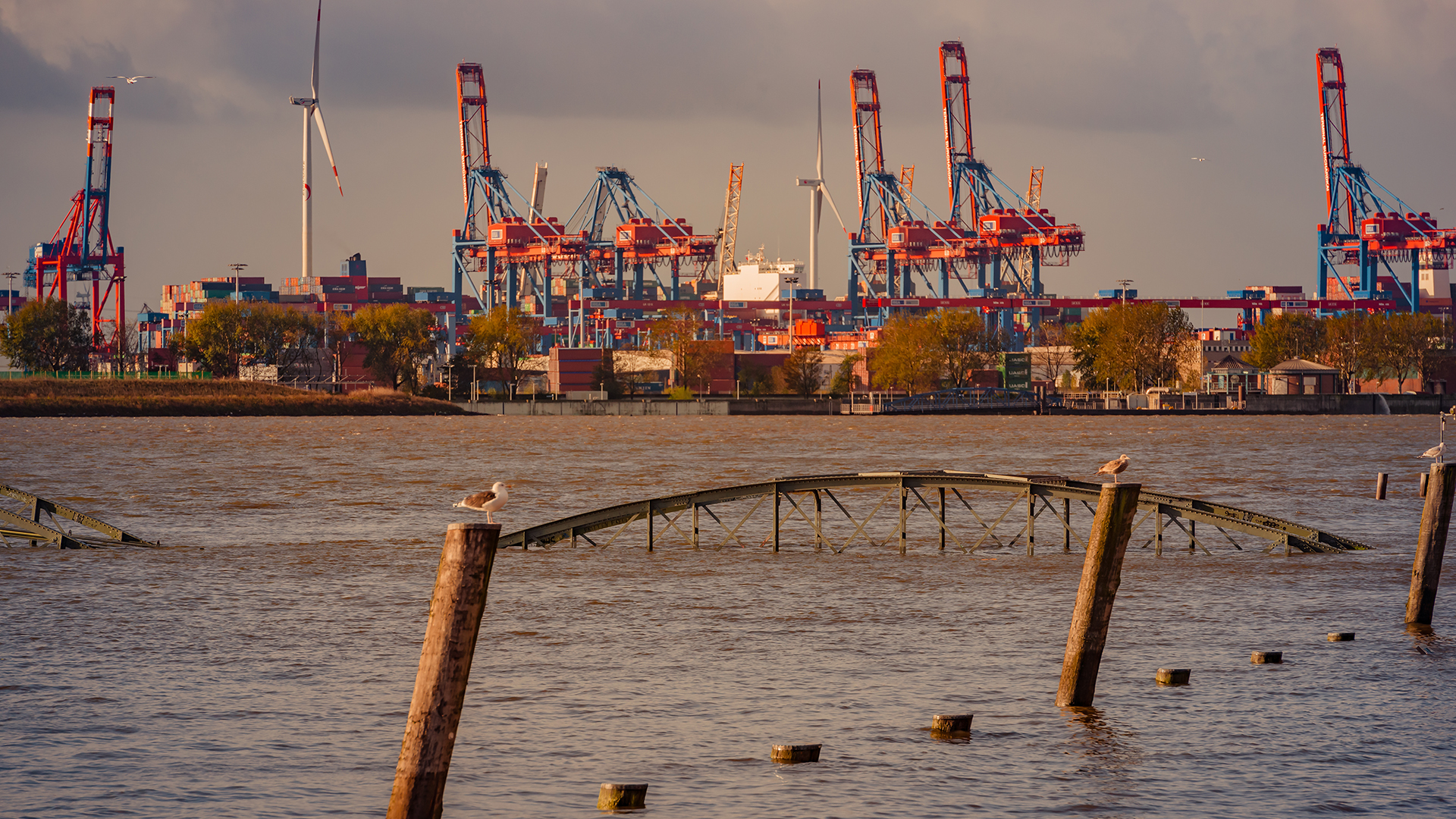
Devising effective protection strategies also necessitates an understanding of the regional variations in mean sea level increases predicted by climatic models based on different scenarios. The largest increases are anticipated for North Sea coasts, followed by Atlantic coasts and Black Sea regions, whereas smaller increments are expected in the Baltic Sea due to land uplift phenomena.
In certain areas like the Baltic Sea, waves and storm surges have a larger role in determining extreme sea levels rather than relative sea-level rise alone. This knowledge aids us significantly in predicting future challenges faced by global ports owing to climate change, thereby facilitating proactive decision-making towards minimising its impacts.
Disruptions in port operations
Disruptions in the operations of maritime hubs, triggered by extreme weather events and changes in regional sea levels, can significantly impede international trade flow and logistics, potentially exerting profound economic consequences on hinterland regions interconnected with these ports.
As coastal infrastructure resilience is tested by these climate-related challenges, the potential economic losses associated with port disruptions become increasingly significant. For instance, if a major port like Rotterdam or London were to experience a prolonged shutdown due to flooding or storm surge damage, it could reverberate through the global shipping industry, affecting not only European markets but also those in North Africa, America, and the Middle East that rely heavily on European ports for imports and exports.
Transportation network disruptions caused by rising sea levels also have far-reaching implications. In particular, inland waterways networks that connect non-coastal regions to seaports are highly vulnerable to such disruptions. These networks serve as crucial arteries for trade and transportation of goods from hinterland areas to coastal ports. If these routes are obstructed or damaged due to severe weather conditions exacerbated by climate change, this could disrupt supply chains on a global scale.
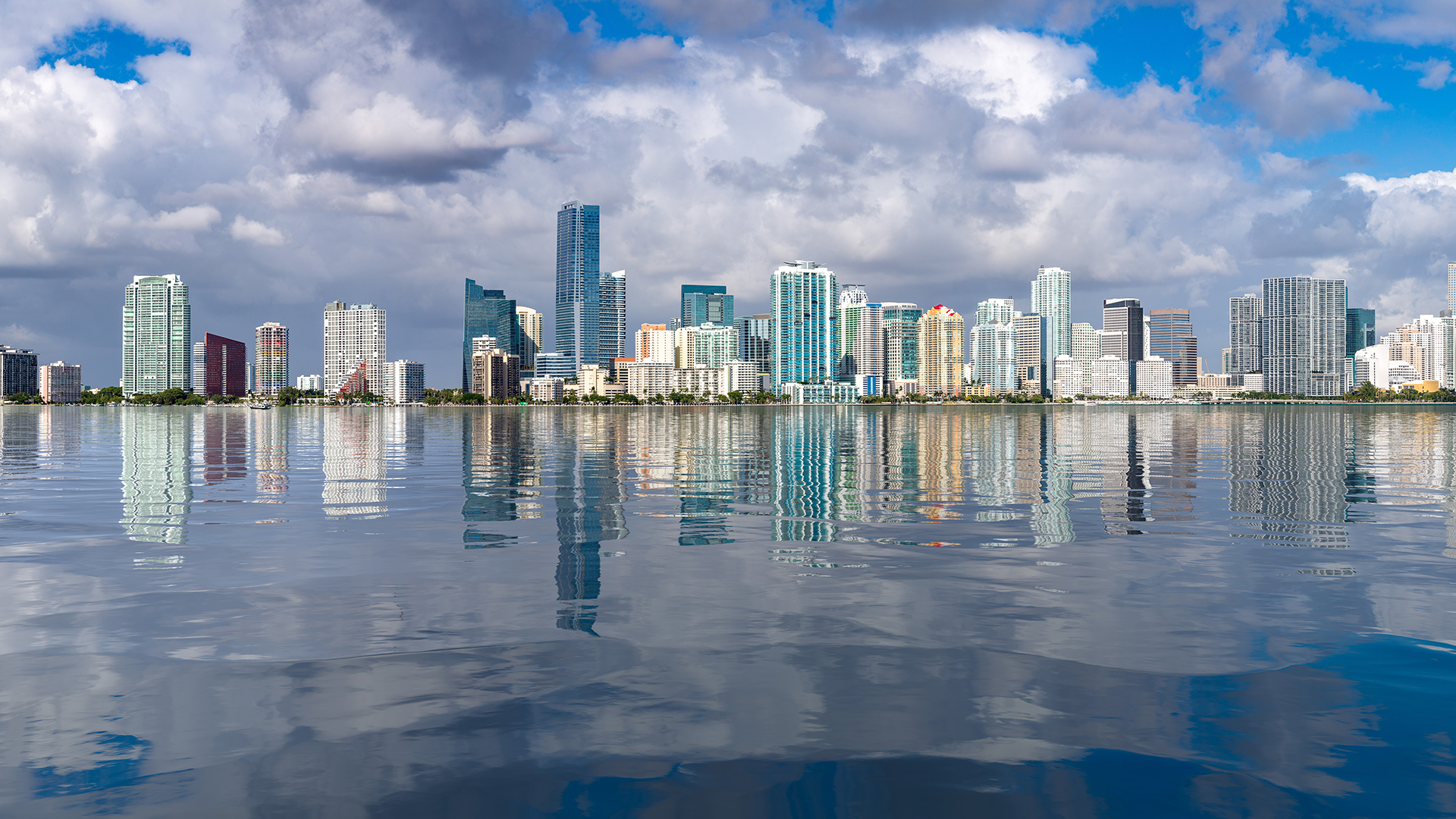
Secondary global effects of rising sea levels
The increasing vulnerability of European seaports to extreme weather events and rising sea levels may result in significant operational interruptions.
These disturbances can further affect interconnected global supply chains, leading to economic implications for countries that depend heavily on maritime trade. Furthermore, these disruptions could necessitate alterations in existing trade routes, which could potentially increase fuel consumption and greenhouse gas emissions.
The impacts are not confined merely to disruptions of port operations but extend further into affecting coastal infrastructure across the globe. For instance, Mediterranean ports might be less threatened by the direct impacts of rising sea levels due to their geographical orientation and local climatic conditions.
However, they may experience considerable indirect impacts due to potential operational failures in major Northern European ports they are connected with through maritime networks. This highlights the extent of interdependence among global ports; a disturbance at one node can propagate throughout the network, resulting in widespread systemic risks.
From an environmental perspective, any modifications made to coastal infrastructure or adjustments required in shipping pathways as part of adaptation strategies could result in additional environmental consequences. Alterations to trade routes could lead to increased voyage times and, subsequently, higher fuel consumption, contributing further towards climate change through increased carbon emissions.
As such, it becomes essential for port authorities worldwide not only to focus on enhancing resilience towards climate threats but also consider the wider environmental implications associated with their strategic responses.
Threat to coastal airports
Airports around the world are facing an unprecedented threat due to the escalating impact of rising sea levels. With climate change driving up ocean levels, many coastal airports find themselves perilously vulnerable to inundation and flooding. This critical issue not only endangers aviation infrastructure but also poses substantial risks to global travel, trade, and connectivity.
One of the most prominent examples is Miami International Airport (MIA) in Florida, US. Situated in a region highly susceptible to sea-level rise, MIA stands on the front lines of climate change. Its proximity to the Atlantic Ocean places it at significant risk, with projections suggesting that a mere one-foot increase in sea levels could inundate large portions of the airport, disrupting operations and threatening critical infrastructure. Efforts to fortify MIA against these risks have involved implementing drainage systems and raising the elevation of runways, but the scale of the challenge remains daunting.
Likewise, airports in low-lying regions across Southeast Asia face a dire future. Bangkok’s Suvarnabhumi Airport in Thailand, located on the Chao Phraya River delta, grapples with the dual threat of subsidence and rising seas.
The airport’s vulnerability to flooding has led to ongoing initiatives to construct flood barriers and improve drainage systems. However, the escalating rate of sea-level rise poses a formidable challenge, necessitating more robust and comprehensive adaptation strategies.
Moreover, the impact extends beyond these individual airports. Coastal airports serve as pivotal hubs in global transportation networks, facilitating the movement of passengers and cargo. Disruptions caused by rising sea levels could have cascading effects on regional and international travel, trade, and economic activities, amplifying the repercussions far beyond the immediate vicinity.
Addressing the vulnerabilities of airports facing rising sea levels demands multifaceted approaches. Collaborative efforts involving governments, aviation authorities, environmental experts, and local communities are crucial.
Investing in innovative engineering solutions, such as building resilient infrastructure and implementing sustainable drainage systems, is imperative. Additionally, long-term planning and policy measures focused on climate resilience and adaptation are indispensable to safeguarding these critical transportation nodes.
As the repercussions of climate change intensify, the urgency to protect vulnerable airports from rising sea levels cannot be overstated.
Float Europe’s solution to rising sea levels
With the imminent threat of rising sea levels placing global seaports in jeopardy, Float Europe’s industry-leading technological solution provides an offshore solution.
The company’s Pneumatically Stabilized Platform (PSP) is a groundbreaking technology designed to create expansive floating platforms of limitless proportions that remain buoyant as sea levels rise.
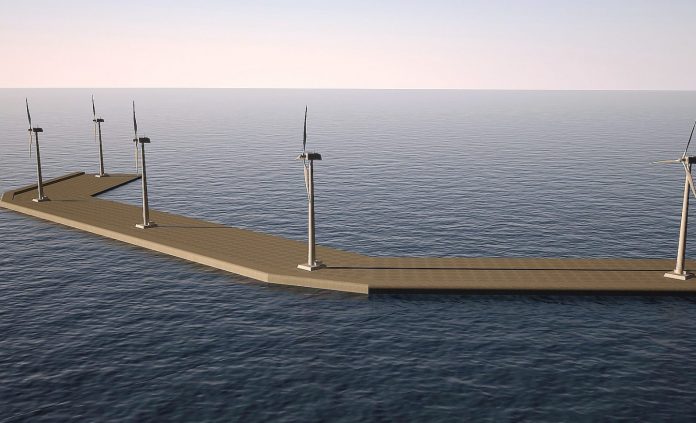
The PSP enables seaports to transition their operations offshore, eliminating the impacts of rising sea levels. The innovation serves as a multipurpose hub with a wide variety of applications, including:
- Offshore container ports;
- Short-sea shipping breakwater/commercial ports;
- Cruise tourism commercial ports;
- Offshore airports;
- LNG liquefaction and regasification facilities;
- Offshore real estate;
- Offshore security ports; and
- Offshore wind energy generation.
How does PSP work?
At the core of PSP technology lies a patented design employing a network of open-bottom cylinders filled with pressurised air, generating the necessary buoyancy. This innovation allows for several key features:
- Stability and load handling: The PSP exhibits remarkable stability, adeptly handling high deck loads while offering a gentle response to waves.
- Longevity and maintenance: With a lifespan exceeding 70 years and requiring minimal maintenance, these platforms eliminate the need for periodic dry docking.
- Adaptability and versatility: Suitable for deployment in various water depths, PSPs can harness multiple energy sources like waves, wind, and currents. They serve diverse functions, from lodging and dining facilities to medical centres and maintenance spaces.
The PSP’s exceptional stability owes itself to the flexibility of its buoyancy air. This flexibility allows for real-time adjustments using ducting and Roots-type blowers to counteract the pressures exerted by ocean waves.
Moreover, owing to their reliance on pressurised air for buoyancy, PSPs can store substantial potential energy. This stored energy can be tapped during periods of low wave activity to meet fluctuating electrical load demands efficiently.
In essence, the PSP system represents a fusion of cutting-edge design and functionality, offering a sustainable and adaptable solution for various marine applications.
Overall, large floating platforms represent an innovative, adaptive, and sustainable approach to addressing the challenges posed by rising sea levels, offering a viable solution to maintain essential human activities in the face of changing environmental conditions.



